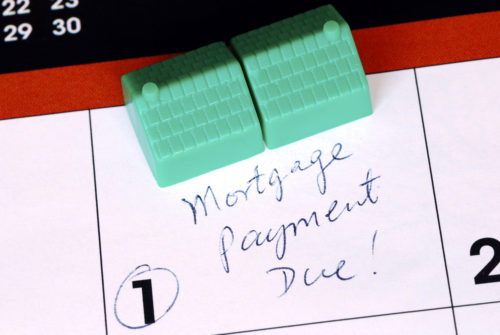Making your first mortgage payment is a milestone unto itself. You now own a home, and you’re starting your journey of paying down one of the largest debts you may ever tackle. But, hold up: what all are you paying when you pay off your mortgage?
Monthly mortgage payments are often broken down into four parts: principal, interest, taxes, and insurance, also known as PITI.
What exactly are all the elements involved in the PITI, and why are each important? What other homeowner expenses can you expect to pay month over month that are not included in the PITI? Let’s find out.
Table of Contents
What is PITI?
Again, PITI stands for the four components of your mortgage payment: principal, interest, taxes, and insurance.
While a mortgage payment will always include your principal and interest, it may also include taxes and insurance; this is common, but not universal. Although every homeowner is required to pay taxes and insurance, you do have the option to not include taxes or insurance in the overall mortgage amount you recieve from your lender (in which case, you would pay taxes and insurance out of pocket). However, for most people, all four components of the PITI are paid into escrow as part of their monthly mortgage payments.
While the PITI price represents the bulk of your monthly cost of owning a home, it is not comprehensive; there can be a lot of additional expenses you need to budget for. Finding a home on which you can afford the PITI payment is a good start, but if PITI will use up your entire monthly housing budget, you may not actually be able to afford the home.
Principal
Principal is the amount you borrow from your lender to pay for the home. For example, if you have a home that is $200,000, and you put down a down payment of 10% (or $20,000), then the principal of your loan is $180,000.
Each month you pay off your mortgage, a portion of those payments will go towards your principal. When a loan is fairly new, the amount that goes towards your principal may be substantially smaller than a much older loan. This is because your loan is so large, the majority of your payments will go towards interest that has accrued. As your loan balance decreases over time, your interest will also decrease, and your payments will primarily go towards your principal.
If you’re curious exactly how much goes into your principal each month, you can track your principal through an amortization schedule. This handy table can be a helpful tool that illustrates how your principal and interest decreases over time. You can also see how much faster your mortgage will be paid off if you make larger payments. If you do decide to make additional payments on your mortgage, make sure you notify your lender to apply that additional amount to your principal.
Interest
While your principal is the meat of your mortgage payments, the interest is the additional charge that the lender requires you to pay in order to borrow from them. It is the fee that the bank or lender charges for extending credit, and almost all other forms of credit have interest on them in some form or other: from car loans to credit cards.
Interest rates can vary depending on the state of the financial market, housing market, and the amount of time you plan to pay off the loan, as well as the size of the downpayment you make, your credit score, and other special circumstances.
Assuming, again, that you buy a $200,000 home, and you make a 10% down payment of $20,000, then your bank will charge interest on the $180,000 loan. Interest is applied to the outstanding loan balance every month. If you have a 30 year term to pay off that loan with a 5% interest rate (Annual Percentage Rate or APR), by the time you’re done paying off your loan you would have also paid off about $167,860 in interest.
This can seem like a lot, but this interest is spread out over the entire life of the loan. Plus, if you decide to pay off the principal faster, your overall interest may decrease as your principal continues to go down.
Taxes
Your bank may or may not include property taxes in the mortgage payments, but this decision is left up to you. Banks typically request that you create an escrow account with them, where you can put deposit every monthly PITI payment. This breaks your annual or bi-annual property tax bill up into 12 monthly payments, which accumulate in escrow until the tax payments are due to your local government.
While it may be convenient for you, this is ultimately done to protect the lender, as not paying property taxes may cause the government to take out a lien on your property. If that happens, you may have to forfeit ownership of the house, which in turn means the bank would lose out on getting their money back from the mortgage and any interest that may have been accrued on that amount. Creating an escrow account that covers taxes, however, ensures that you’re always paying on time and never missing a property tax payment. It’s also easier for you, as the lender will adjust the account accordingly as your tax rates fluctuate.
Property taxes are determined by a few factors: where you live and the local tax rate in that county or city, the overall value of the home, and any improvements or damages to the home that may cause the value to increase or decrease. Your local assessor’s office will assess the value of the home every year, and your bank will be sure to use the money in your escrow account to pay taxes when they are due.
If for some reason your taxes unexpectedly increased, your bank may cover the difference and allow you to pay off that difference over time by slightly increasing your monthly PITI payments. If they are lower, however, then they may give money back to you in a form of a check at the end of the year.
Insurance
The final aspect of PITI is the homeowner’s insurance you have on the home or property, and private mortgage insurance, if it’s applicable to your situation. Similarly to property taxes, your mortgage provider may set up an escrow account where you can pay for insurance as part of your PITI payment, and they will pay for your insurance premiums out of this account when they are due.
Your homeowners insurance is needed to protect the home from potential theft or damages, and additional insurance may protect you from natural disasters as well (this is typically separate from normal homeowners insurance, called natural disaster/flood/catastrophic damage insurance depending on where you live). Insurance is generally a condition of a mortgage, and failure to acquire coverage can mean you don’t get your mortgage or your home. Because your house is used to secure your mortgage, insurance is necessary to protect that property against damage — again, this protection is as much in your lender’s interest as yours.
Private mortgage insurance (PMI) is needed if your initial down payment was below 20% of the overall price of the home. This is used to protect the lender in case you default on the loan, but does not protect the home itself in the event of damage. If you want to avoid private mortgage insurance, then you would need ensure you can afford a 20% down payment, or attempt to apply for a government-backed mortgage (such as a VA loan, FHA loan, or USDA loan). Sometimes lenders will agree to pay for the PMI for you, but this normally includes much higher interest rates on the mortgage, so you may end up paying more in the long run if you agree to this option.
Over time, as you pay down your principal, you may have the option to drop your PMI payments if your lender allows. However, you will always need homeowners insurance (and additional insurance if you need it) so that your home’s value and the lender’s loan is secure. If your home becomes damaged, the insurance will help pay for those damages.
Why the PITI Payment is Important
PITI is the starting point for determining what you can afford when shopping for a new house. As a homeowner, it is extremely important to be aware of your monthly costs of owning a home. Without that awareness, you may be setting yourself up for failure — being unable to afford the home you’re in and potentially losing it to foreclosure, or not being able to track your money and losing out on thousands of dollars a month simply because you lack a personal budget.
The PITI is both a way for the lender to ensure you pay your bills on time, and for you to track the bulk of your monthly homeowner expenses. However, it is important to understand that your PITI payment does not cover the entire range of costs associated with owning a home — it is a starting point for calculating what price range you can afford.
Using the example above of a $200,000 home, 10% down payment, and 5% interest rate, your monthly mortgage payments (principal and interest) would only be about $960 a month. However, if you also calculate in the taxes and insurance, then your full PITI payment would be closer to $1,200 or $1,300 (depending on where you live, your insurance rates, etc). You then would have a better understanding of exactly how much it costs, per month, to be a homeowner.
Additionally, lenders compare the PITI payment to your monthly income during the loan approval process, and if they find you cannot afford this home, then they will reject your loan (or ask you to look for a home that’s more within your budget). Specifically, lenders will look to see that the PITI payments do not exceed a percentage of your income that is known as the front-end debt-to-income ratio. Depending on the loan you’re applying for and your other debt obligations (car loan, student loans, etc), the percentage of your income the lender looks for may be different.
Down the road, if your PITI payments become too high for you to pay, or you stumble into some bad luck and become unemployed, there are ways to lower your monthly payments, either through refinancing or additional options.
What Isn’t Included in Your Monthly Mortgage Payment
However, it is also important to remember that the PITI doesn’t represent the full range of costs associated with homeownership. There are other monthly payments and hidden costs that you will need to consider as a homeowner that you should also budget for to ensure you are able to afford a home.
When you’re first purchasing a home, you should also be aware of closing costs and any additional payments you may have to make before the home can officially be yours. Closing costs are often about 2-5% of the overall home’s cost, so you may need to have a few thousand dollars reserved or borrowed as part of your mortgage just for the closing process.
After the home is yours, you’ll also have a host of other payments you may need to make. This includes maintenance items, such as buying large items like furniture for the home, repainting, supplying appliances, and more. Additionally, if you live in a subdivision or an area with a Homeowners Association (HOA), then you may have monthly or annual fees you also have to pay.
And finally, there are the important payments of monthly utilities: water, sewer, trash, electricity, gas, and internet. You may also elect to pay for a telephone line, cable, or another form of a television supplier. If you don’t pay these bills, then the city may shut off your power or water supply, and it could take days after you pay your bill before they come back on.
Owning a home can often be a lot more expensive than it appears, but that doesn’t mean it’s something you’re incapable of affording. With proper planning, awareness, and budgeting, you can find the home of your dreams that fits within your lifestyle and income, and you can set yourself up for success by having realistic expectations of what it takes to be a homeowner.
Image Source: https://depositphotos.com/





